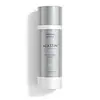What's inside
What's inside
 Key Ingredients
Key Ingredients

 Benefits
Benefits

 Concerns
Concerns

No concerns
 Ingredients Side-by-side
Ingredients Side-by-side

Water
Skin ConditioningGlycerin
HumectantPolyacrylate-13
Dimethicone
EmollientSodium Hyaluronate
HumectantSodium Hyaluronate Crosspolymer
HumectantOctapeptide-45
Skin ConditioningHexapeptide-11
Skin ConditioningTremella Fuciformis Sporocarp Extract
AntioxidantLactoferrin
Skin ConditioningTetradecyl Aminobutyroylvalylaminobutyric Urea Trifluoroacetate
Skin ConditioningXylitol
HumectantPropanediol
SolventAnhydroxylitol
HumectantPhospholipids
Skin ConditioningXylitylglucoside
HumectantHydroxymethoxyphenyl Decanone
Skin ConditioningTocopherol
AntioxidantAscorbyl Palmitate
AntioxidantCaprylyl Methicone
Skin ConditioningCaprylic/Capric Triglyceride
MaskingPolyisobutene
Caprylyl Glycol
EmollientDisodium EDTA
Betaine
HumectantPolysorbate 20
EmulsifyingEthylhexylglycerin
Skin ConditioningCaprylhydroxamic Acid
Sorbitan Isostearate
EmulsifyingHelianthus Annuus Seed Oil
EmollientLecithin
EmollientPentylene Glycol
Skin ConditioningMagnesium Chloride
Phenoxyethanol
PreservativePotassium Sorbate
PreservativeSodium Hydroxide
BufferingWater, Glycerin, Polyacrylate-13, Dimethicone, Sodium Hyaluronate, Sodium Hyaluronate Crosspolymer, Octapeptide-45, Hexapeptide-11, Tremella Fuciformis Sporocarp Extract, Lactoferrin, Tetradecyl Aminobutyroylvalylaminobutyric Urea Trifluoroacetate, Xylitol, Propanediol, Anhydroxylitol, Phospholipids, Xylitylglucoside, Hydroxymethoxyphenyl Decanone, Tocopherol, Ascorbyl Palmitate, Caprylyl Methicone, Caprylic/Capric Triglyceride, Polyisobutene, Caprylyl Glycol, Disodium EDTA, Betaine, Polysorbate 20, Ethylhexylglycerin, Caprylhydroxamic Acid, Sorbitan Isostearate, Helianthus Annuus Seed Oil, Lecithin, Pentylene Glycol, Magnesium Chloride, Phenoxyethanol, Potassium Sorbate, Sodium Hydroxide
Water
Skin ConditioningButylene Glycol
HumectantTrisiloxane
Skin ConditioningPetrolatum
EmollientCarthamus Tinctorius Seed Oil
MaskingGlycerin
HumectantPPG-2 Myristyl Ether Propionate
EmollientC10-30 Cholesterol/Lanosterol Esters
EmulsifyingLimnanthes Alba Seed Oil
Skin ConditioningLaureth-7
EmulsifyingC13-14 Isoparaffin
EmollientPolyacrylamide
Beeswax
Emulsion StabilisingC12-15 Alkyl Benzoate
AntimicrobialCaprylyl Glycol
EmollientCetyl Alcohol
EmollientCitrus Aurantium Dulcis Peel Oil
MaskingCitrus Limon Peel Oil
MaskingCymbopogon Citratus Leaf/Stem Oil
MaskingEthylene Brassylate
MaskingEthylhexylglycerin
Skin ConditioningGlyceryl Stearate
EmollientHexylene Glycol
EmulsifyingLavandula Hybrida Oil
EmollientLinalool
PerfumingLinalyl Acetate
MaskingLinum Usitatissimum Seed Oil
PerfumingLitsea Cubeba Fruit Oil
MaskingMalic Acid
BufferingOctanal
PerfumingOlea Europaea Fruit Oil
MaskingPEG-100 Stearate
Persea Gratissima Oil
Skin ConditioningPhenoxyethanol
PreservativePhoenix Dactylifera Fruit Extract
EmollientPhytosphingosine
Skin ConditioningPhytosterols
Skin ConditioningPyrus Malus Fruit Extract
Skin ConditioningQuercetin
AntioxidantRosa Canina Fruit Oil
EmollientSodium Hyaluronate
HumectantSodium Hydroxide
BufferingWater, Butylene Glycol, Trisiloxane, Petrolatum, Carthamus Tinctorius Seed Oil, Glycerin, PPG-2 Myristyl Ether Propionate, C10-30 Cholesterol/Lanosterol Esters, Limnanthes Alba Seed Oil, Laureth-7, C13-14 Isoparaffin, Polyacrylamide, Beeswax, C12-15 Alkyl Benzoate, Caprylyl Glycol, Cetyl Alcohol, Citrus Aurantium Dulcis Peel Oil, Citrus Limon Peel Oil, Cymbopogon Citratus Leaf/Stem Oil, Ethylene Brassylate, Ethylhexylglycerin, Glyceryl Stearate, Hexylene Glycol, Lavandula Hybrida Oil, Linalool, Linalyl Acetate, Linum Usitatissimum Seed Oil, Litsea Cubeba Fruit Oil, Malic Acid, Octanal, Olea Europaea Fruit Oil, PEG-100 Stearate, Persea Gratissima Oil, Phenoxyethanol, Phoenix Dactylifera Fruit Extract, Phytosphingosine, Phytosterols, Pyrus Malus Fruit Extract, Quercetin, Rosa Canina Fruit Oil, Sodium Hyaluronate, Sodium Hydroxide
Ingredients Explained
These ingredients are found in both products.
Ingredients higher up in an ingredient list are typically present in a larger amount.
Caprylyl Glycol is a humectant and emollient, meaning it attracts and preserves moisture.
It is a common ingredient in many products, especially those designed to hydrate skin. The primary benefits are retaining moisture, skin softening, and promoting a healthy skin barrier.
Though Caprylyl Glycol is an alcohol derived from fatty acids, it is not the kind that can dry out skin.
This ingredient is also used as a preservative to extend the life of products. It has slight antimicrobial properties.
Learn more about Caprylyl GlycolEthylhexylglycerin (we can't pronounce this either) is commonly used as a preservative and skin softener. It is derived from glyceryl.
You might see Ethylhexylglycerin often paired with other preservatives such as phenoxyethanol. Ethylhexylglycerin has been found to increase the effectiveness of these other preservatives.
Glycerin is already naturally found in your skin. It helps moisturize and protect your skin.
A study from 2016 found glycerin to be more effective as a humectant than AHAs and hyaluronic acid.
As a humectant, it helps the skin stay hydrated by pulling moisture to your skin. The low molecular weight of glycerin allows it to pull moisture into the deeper layers of your skin.
Hydrated skin improves your skin barrier; Your skin barrier helps protect against irritants and bacteria.
Glycerin has also been found to have antimicrobial and antiviral properties. Due to these properties, glycerin is often used in wound and burn treatments.
In cosmetics, glycerin is usually derived from plants such as soybean or palm. However, it can also be sourced from animals, such as tallow or animal fat.
This ingredient is organic, colorless, odorless, and non-toxic.
Glycerin is the name for this ingredient in American English. British English uses Glycerol/Glycerine.
Learn more about GlycerinPhenoxyethanol is a preservative that has germicide, antimicrobial, and aromatic properties. Studies show that phenoxyethanol can prevent microbial growth. By itself, it has a scent that is similar to that of a rose.
It's often used in formulations along with Caprylyl Glycol to preserve the shelf life of products.
Sodium Hyaluronate is hyaluronic acid's salt form. It is commonly derived from the sodium salt of hyaluronic acid.
Like hyaluronic acid, it is great at holding water and acts as a humectant. This makes it a great skin hydrating ingredient.
Sodium Hyaluronate is naturally occurring in our bodies and is mostly found in eye fluid and joints.
These are some other common types of Hyaluronic Acid:
Learn more about Sodium HyaluronateSodium Hydroxide is also known as lye or caustic soda. It is used to adjust the pH of products; many ingredients require a specific pH to be effective.
In small amounts, sodium hydroxide is considered safe to use. However, large amounts may cause chemical burns due to its high alkaline.
Your skin has a natural pH and acid mantle. This acid mantle helps prevent harmful bacteria from breaking through. The acid mantle also helps keep your skin hydrated.
"Alkaline" refers to a high pH level. A low pH level would be considered acidic.
Learn more about Sodium HydroxideWater. It's the most common cosmetic ingredient of all. You'll usually see it at the top of ingredient lists, meaning that it makes up the largest part of the product.
So why is it so popular? Water most often acts as a solvent - this means that it helps dissolve other ingredients into the formulation.
You'll also recognize water as that liquid we all need to stay alive. If you see this, drink a glass of water. Stay hydrated!
Learn more about Water